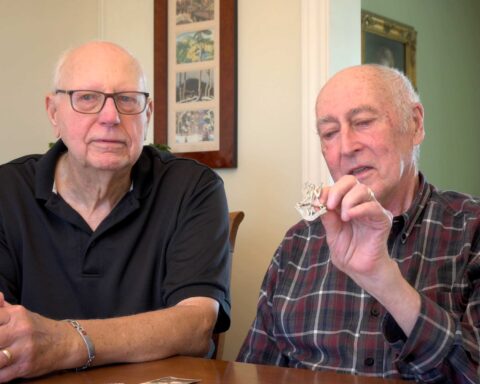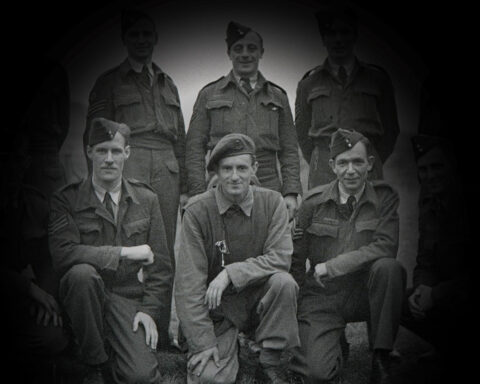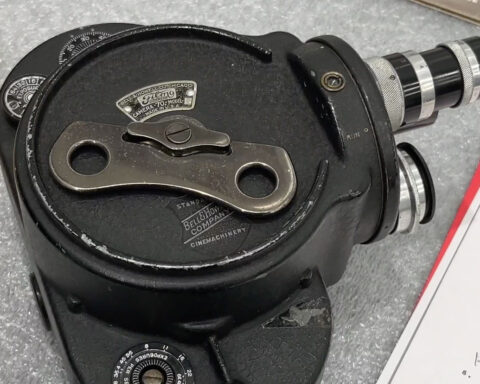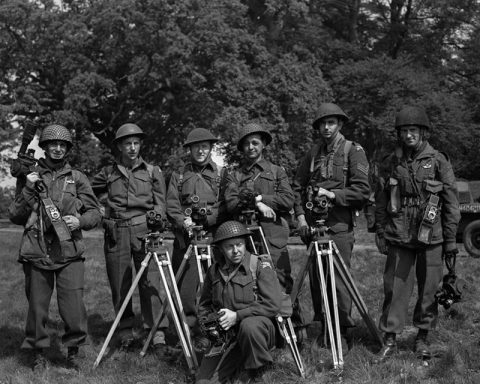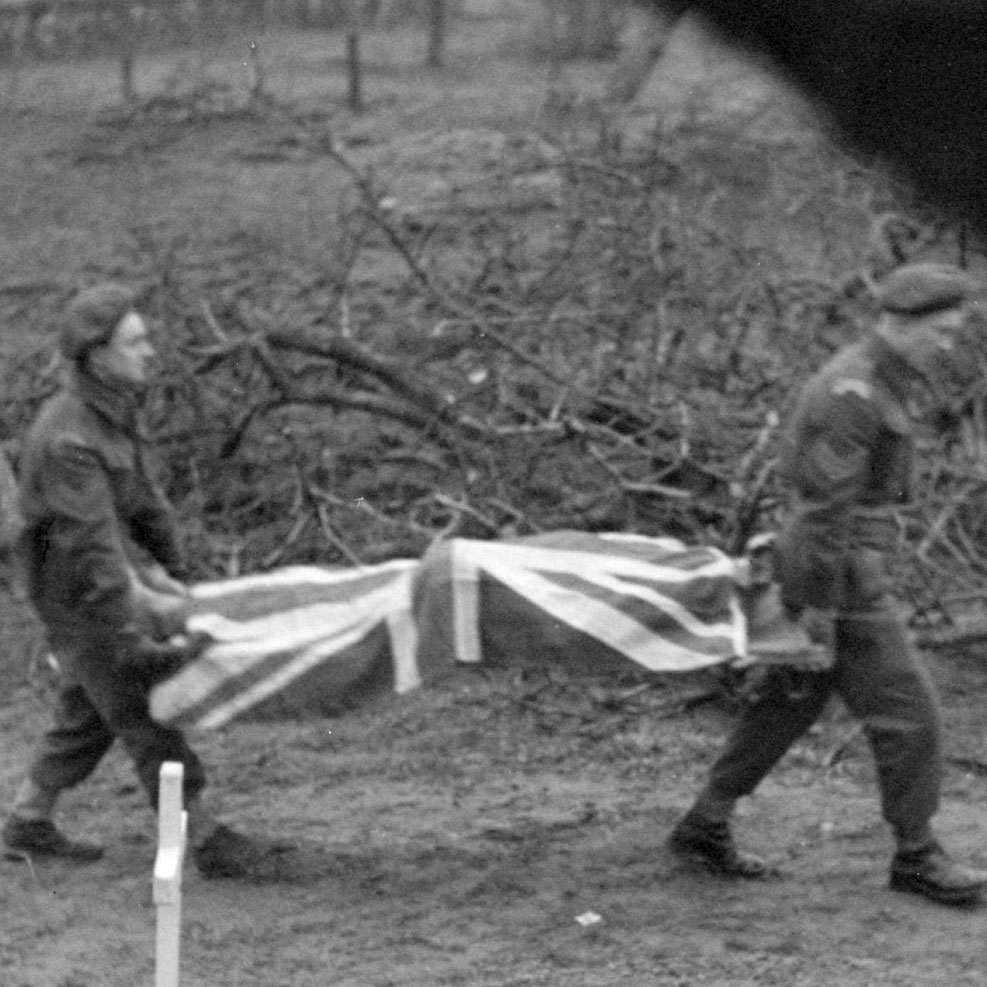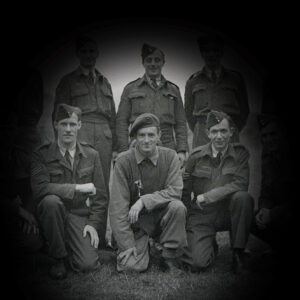Born, Elmer Randall Bonter, or ‘Ed‘ to his friends and colleagues, was “a native of Ameliasburgh“, a township in the Prince Edward County area of Ontario.
At the age of 16 years, Elmer Bonter would complete Grade 10 of secondary school, and go on to take a night course in book-keeping at the Trenton Business College, in Trenton Ontario.
From 1932 to 1934, Elmer was employed as a store clerk and window dresser at A & P Stores, in Trenton, Ont., and from 1934 to 1941, as a newspaper reporter-photographer for the “Toronto Telegram” and “British United Press“.
Elmer Bonter enlisted in the Canadian Army, on April 25th, 1941 at Kingston, Ont., and sent overseas, September 1st, 1941 with the 4th Lt. A.A. Regt., (Light Anti-Aircraft Regiment), as a qualified clerk, group “C”, July 9th, 1941.
In his military personnel file, dated February 11th, 1943, Gunner E.R. Bonter is listed as 5’11”, 135lbs, with a medical category A, and a Test score of 165 (above average).
Gunner Bonter’s newspaper experience in photography would eventually catch the attention of Army staff in England, and he would be reassigned to the Public Relations Office (PRO), Canadian Military Headquarters (C.M.H.Q.), in England.
Not satisfied with an office job at C.M.H.Q., Gunner Bonter would submit a request to be transferred over to the Film & Photo Unit section…
Sir:
I beg to make application for transfer from Public Relations Service, First Cdn Army, to Public Relations Service, Canadian Military Headquarters.
It is my desire to continue photographic duties with the Canadian Army Overseas and, since I understand that, in future, there will be no provision for photographers at this Headquarters, I would appreciate the opportunity to join your establishment.
Trusting that this application will receive attention at your convenience, I have the honor to be, sir, your obedient servant,
Signed E.R. Bonter
Over time, Gunner Bonter’s photographic work at CMHQ, would eventually catch the attention of senior officers, and his request for transfer would land on the desk of, Capt. John ‘Jack’ McDougall, officer in command of the Canadian Army Film & Photo Unit;
20 Feb 43.
Public Relations W.E.
Sergeants-cameramen.
The undermentioned soldier appears to possess the necessary qualifications to cover vacancies for Sergeants-cameramen in the new W.E. for the P.R. Section, C.M.H.Q.:
Gnr. BONTER, E.R.
H.Q. First Canadian Army.
To: D.D.P.R., C.M.H.Q
Re: Gnr. BONTER, E.R., RCA
May the m/n soldier be promoted A/Cpl to cover an existing vacancy on Film Unit W.E. for sergeant-cameraman, with effect 10 Jun 43?
Signed Capt. J.E.R. McDougall
Canadian Army Film Unit (P.R.O.)
In May-June , 1943, Gunner Bonter would attend and pass the necessary ‘Cinemagraph Courses‘, at the British Film and Photo Centre at the famous Pinewood Studios, to attain Canadian Army trade of, Photographer (Cine), Group B.
Army Film Unit, Pinewood Studios
Iver Heath, Bucks
Cinemagraphic Courses
The following is a list of certified true copies of qualifications obtained by personnel at Pinewood Studios:-
...Gnr BONTER, E,R. - attended a course on cinemagraph here, between 17-5-43 and 29-6-43 and has attained a standard of proficiency equivalent to that required to pass Army Trades Test photographer (Cine) Group "B".
(Signed)
Major H. Stewart
Comd Army Film Unit (British)
dated 6 July 43
In 1943, the Canadian military was heavily engaged in the Second World War, most notably the Canadian Army’s first major land operations in the Italian Campaign, which included the invasions of Sicily and mainland Italy.
In July 1942, the 1st Canadian Parachute Battalion was formed, and in July 1943, the 1st Canadian Parachute Battalion was transferred to the United Kingdom.
Upon arrival in the UK, the battalion was assigned to the British 3rd Parachute Brigade, which was part of the British 6th Airborne Division. This move was significant as it integrated them into a major operational airborne formation and shifted their focus from potential home defence to offensive operations in Europe.
For the remainder of 1943, the Canadian paratroopers underwent further intensive training under British command at Carter Barracks in Bulford, England. This included rigorous physical conditioning, long marches, and extensive exercises to prepare for the specific demands of the upcoming airborne assault in Normandy.
To prepare, Capt. J.E.R. McDougall, officer in command of the Canadian Army Film Unit requested to have cameramen trained as parachute jumpers who would jump with the first troops.
It was agreed by Lt-Col. W,G. Abel, Deputy Director of Public Relations (D.D.P.R.), C.M.H.Q., that the newly promoted Sgt’s, Elmer Bonter, and Dave Reynold’s be attached to the 6th Airborne Division (British), 3 Parachute Brigade, and granted to take photographs from the air in the performance of their duties as official photographers of the Canadian Army Film and Photo Unit.
During his duties with the Canadian Army Film Unit, Sgt. Bonter would use his talents as a newly trained Cine Cameraman to shoot film footage, some of which would eventually be approved and included in some of the Canadian Army Newsreels.
Footage credited to Sgt. Bonter from, 10th of July to the 14th Sept. 1943, is identified with the following assignments;
Investiture – CMHQ Sports – Ralston at 1 Corps. – Unit Story – (Camerons of Ottawa) – Exercise Snaffle – International Baseball – Army Day X – Exercise Harlequin. Canadian Army Newsreels with stories involving the 1st Canadian Paratroop Battalion can be found in ISSUES: 19, 26, 28, 31, 67 , 69, 80, 86.

Taken from, THE VIEWFINDER: News and Views by Camera Crank: FEB 1944; (The Viewfinder is an interoffice paper distributed by the Film Unit’s Public Relations office in England, and distributed wherever the Film Unit is located in the field).
“SGTS. DAVE REYNOLDS and ‘SCOOP’ BONTER have turned in some good material that will soon be in the newsreel as a paratroop story.” Of note is Canadian Army Newsreel Issue 19, where Sgt. Dave Reynolds is seen accepting his ‘wings’ at the 2:10 mark. It’s most likely that one of the cine cameramen covering the story was Sgt. Bonter…
Letter to RQMS L. Bates, PRO. CMHQ,
Sir: To cover parachute story properly find that I will be needing flash equipment for the Rolly, will you see what you can do for me in this respect, please. An Abbey gun complete with two dozen bulbs are my requirements. My new address: Sgt. E.R. Bonter, First Cdn Parachute Battalion, Cdn Army England. The best to you…19 SEP 43
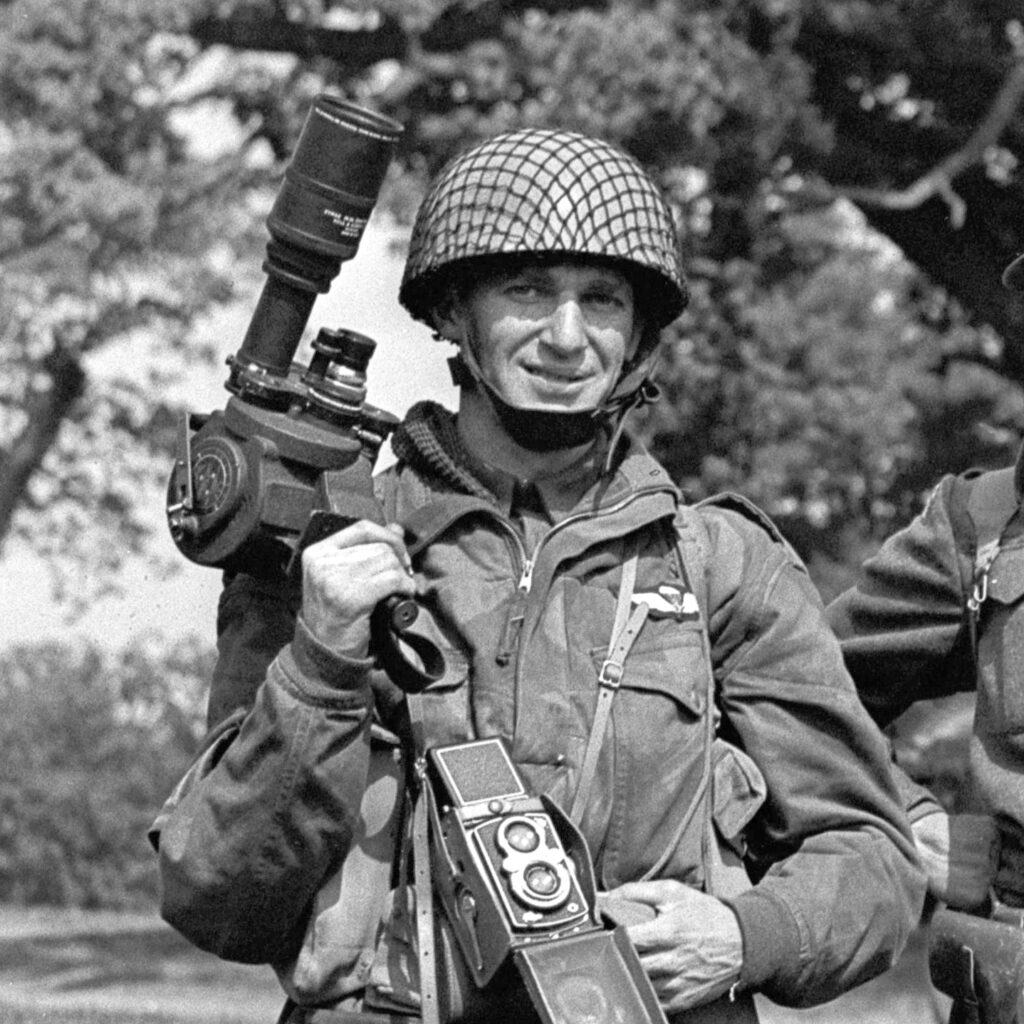
Listed below are several photographs shot by Sgt. E.R. Bonter in his new duties as combat photograher…
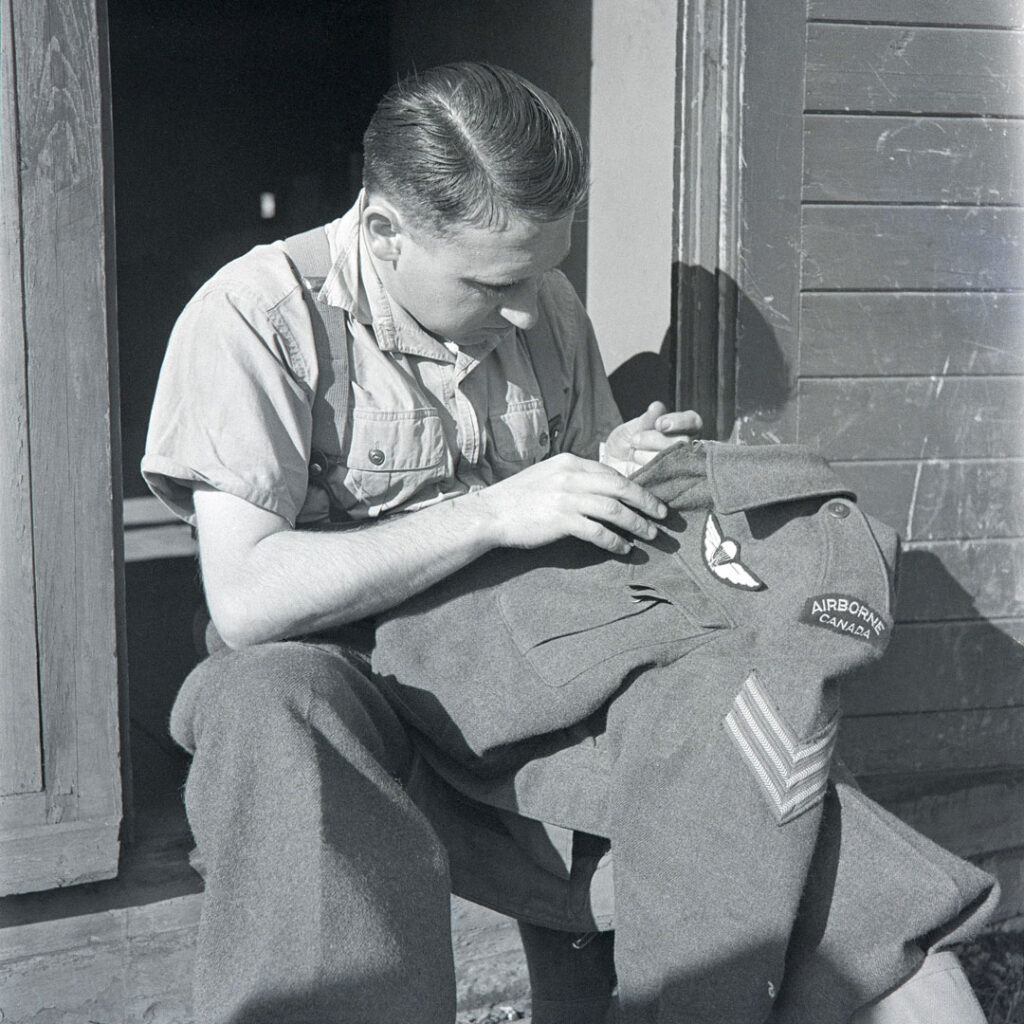

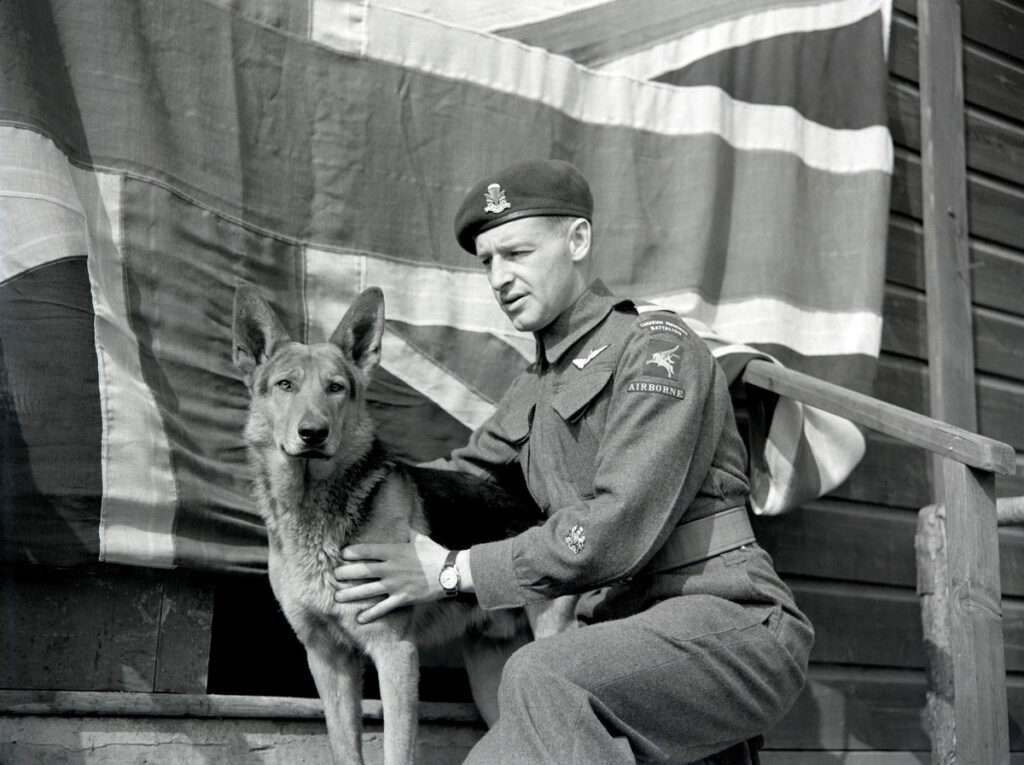
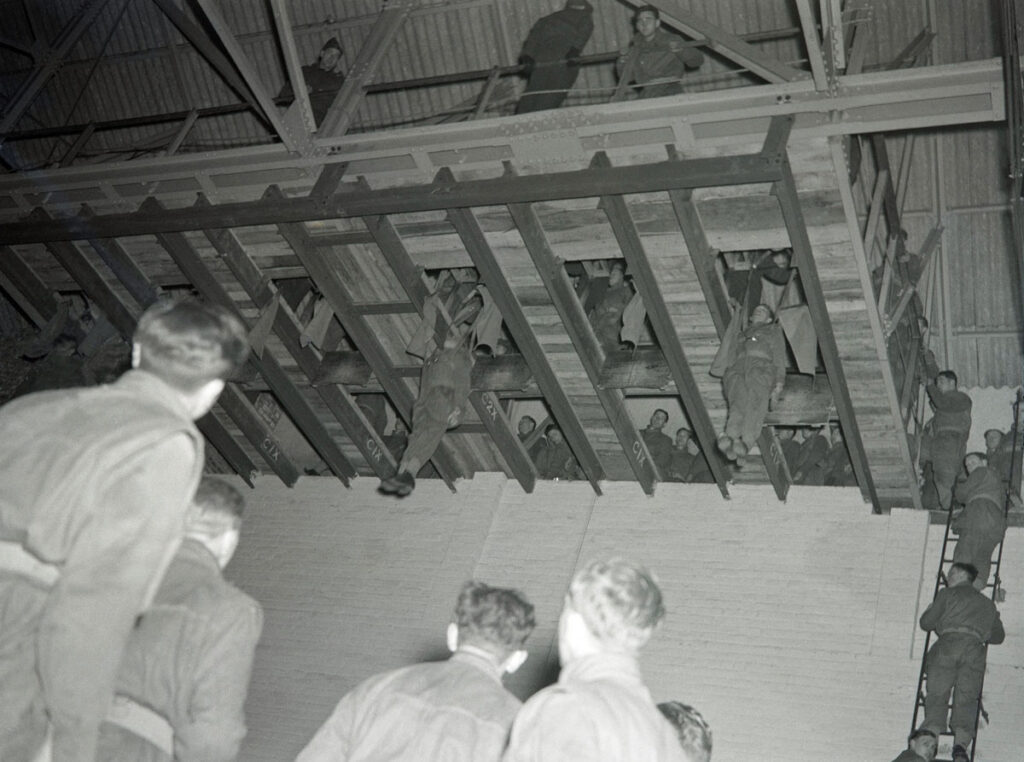
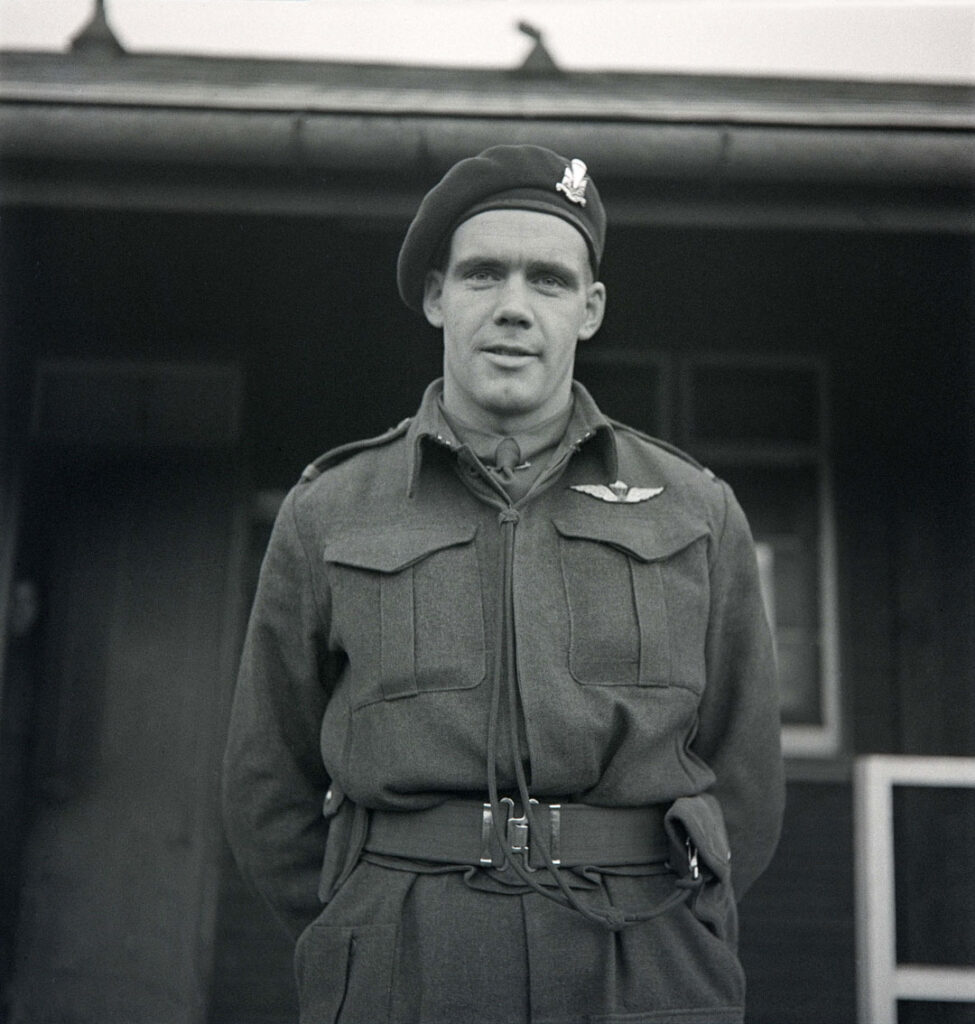
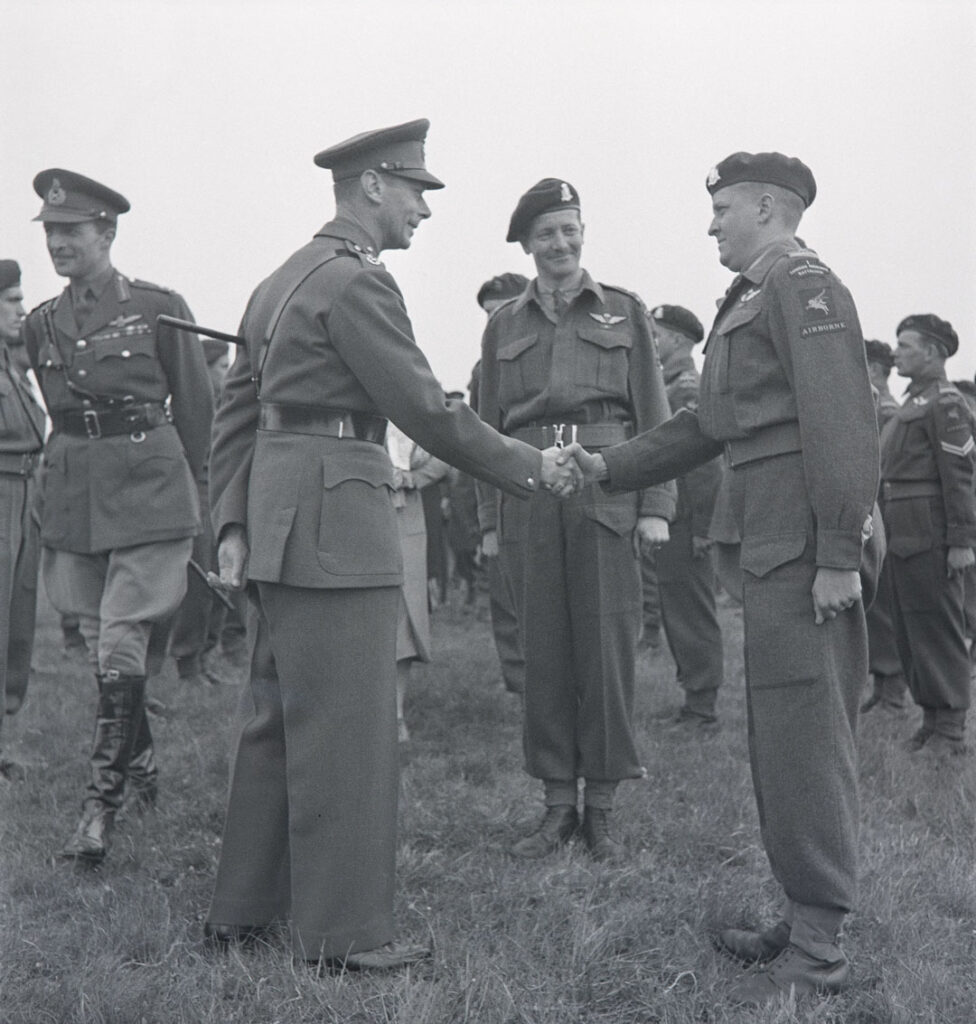
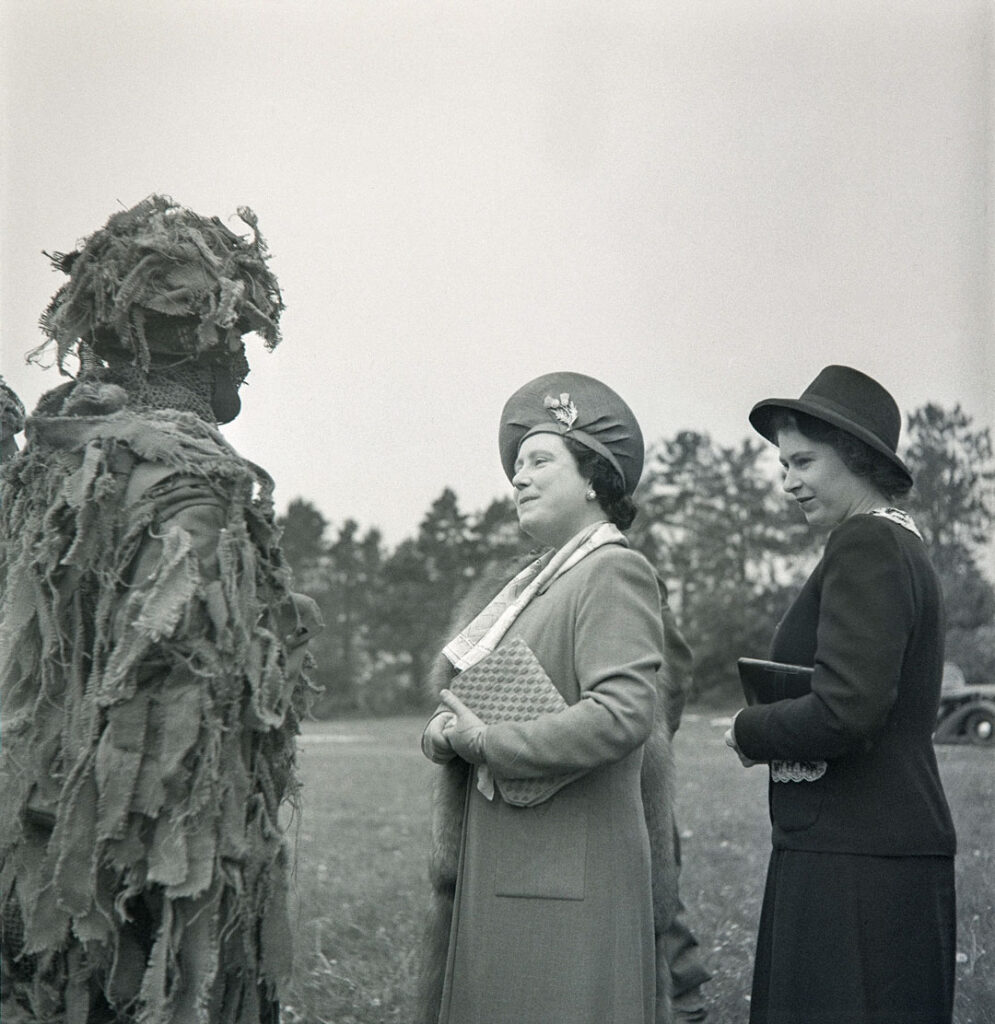
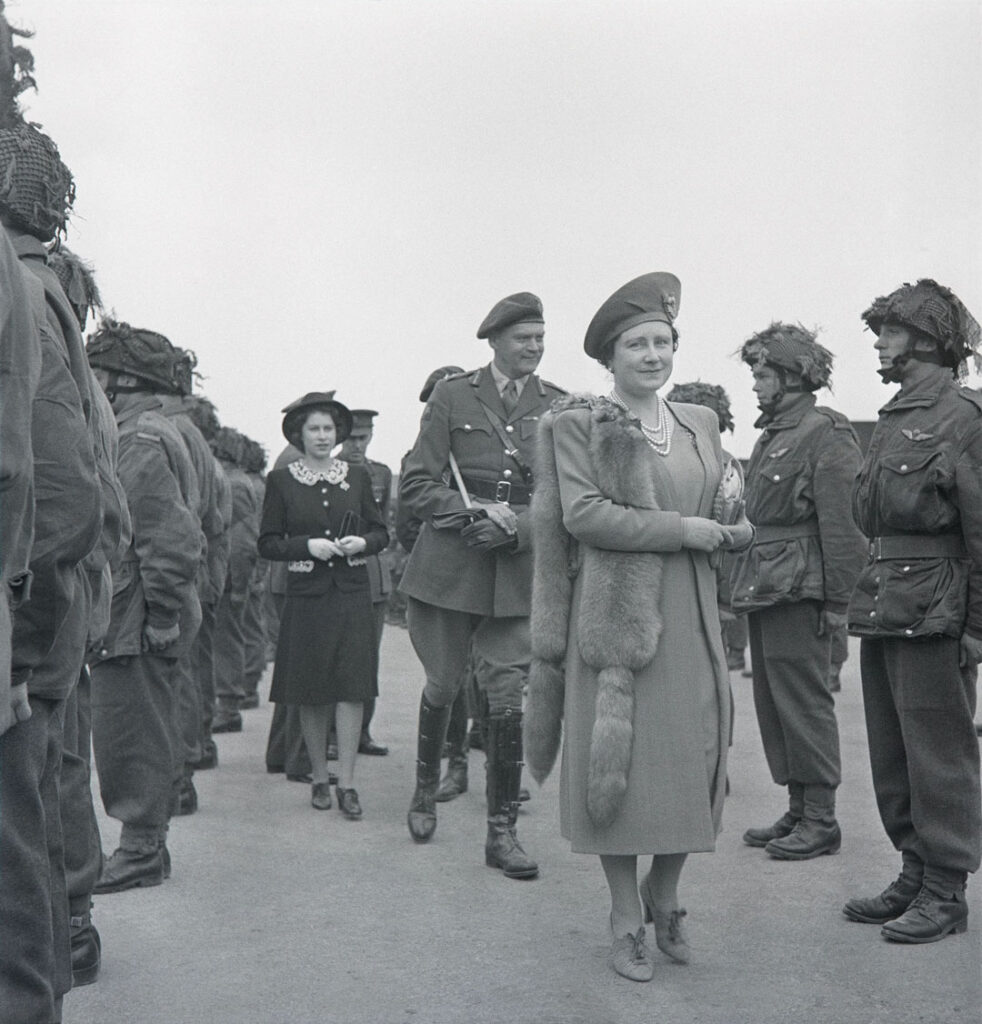


“By May 24th, 1944, the 1st Canadian Battalion leaves Bulford for the Down Ampney transit camp. They are ready to fight.” https://www.junobeach.org/canada-in-wwii/articles/1st-canadian-parachute-battalion/
But in the many months of training leading up to the Normandy Invasion, an unfortunate accident renders Sgt. E.R. Bonter unable to continue.
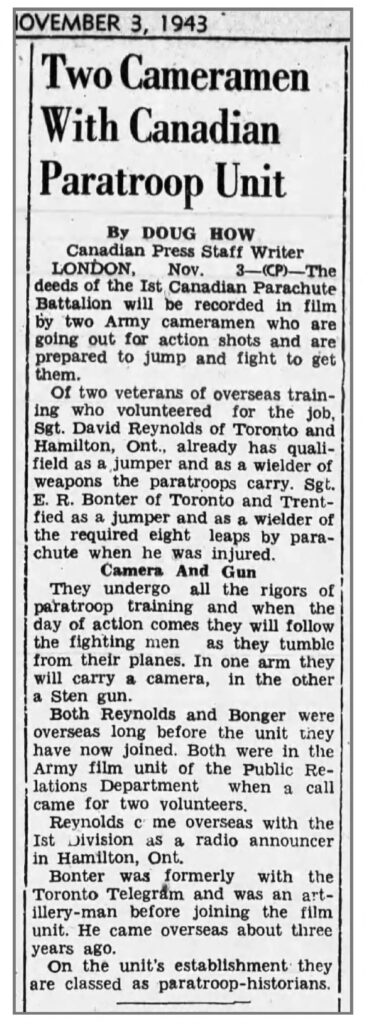
Published in the Daily Standard-Freeholder, November 3rd, 1943, a story runs about how the deeds of the 1st Canadian Parachute Battalion will be recorded by Sgt. Dave Reynolds, and Sgt. Elmer Bonter of Canadian Army Film Unit when it was learned that…
“Sgt. E.R. Bonter of Toronto and Trenton, Ont., qualified as a jumper and as a wielder of the required eight leaps by parachute when he was injured.”
(Credit: Newspapers.com)
The Viewfinder will report: “Sgt ‘Scoop’ (there’s that word again) Bonter has gone in for a repair job on his eyes… he and Sgts Jack Stollery and Bill Cox are making medical history at 23 Gen.”
The Kingston Whig-Standard, Thursday, January 11, 1945
Nine District Soldiers Return from the War
Colorful Outfit
Wearing patches and insignias that really stood out, was Sgt. E.R. Bonter of the Canadian Army Film and Photo Unit. A photographer on a Toronto paper for seven years before the war, he was really at home during an interview and kept the reporter one jump behind all the way through.
He denied a Canadian press story that he received injuries when he landed in France just after D-Day, said his injuries were suffered when qualifying as a parachutist in England. A spinal injury suffered in a jump affected both eyes; one is still of little use, the other is slowly becoming better.
Just above the sergeant's stripes on his right arm he wears the insignia of a British air-borne division, a crest with the words :air-borne" below: on his shoulder, the name of his unit, on his epaulets, the yellow band of the 3rd Paratroop Division, and on his head, a red beret.
A nephew of Miss M.L. Bonter of Trenton, he plans to return there for a time before continuing to Toronto. He joined an ack-ack unit early in the war, was later chosen, because of his experience, for the important task of filming actual battle scenes. (Credit: Newspapers.com)
Intelligencer - FEB 27th, 1991 - Elmer Bonter - Well-known journalist
A native of Ameliasburgh, he provided extensive photo coverage of the Second World War while he was attached to the 32nd Airborne Regiment. After the war he worked extensively as a reporter-photographer throughout the Quinte area, often on a freelance basis.
He had been a member of Branch 110, Trenton, Royal Canadian Legion; also the Masonic Lodge.
A tiny few of the many Star Photos by Elmer Bonter after the war;
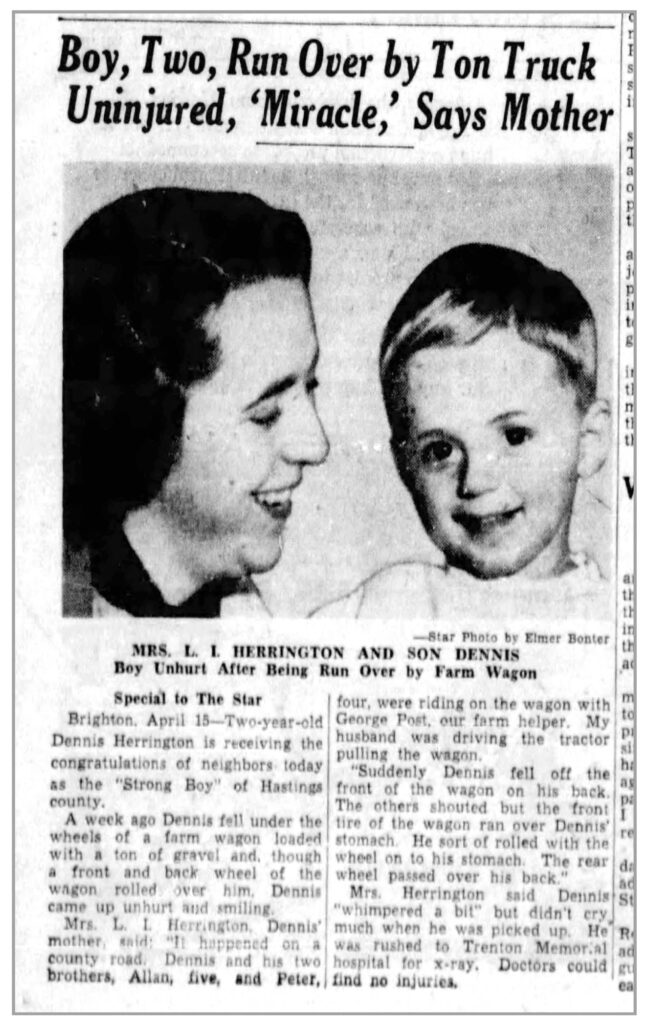
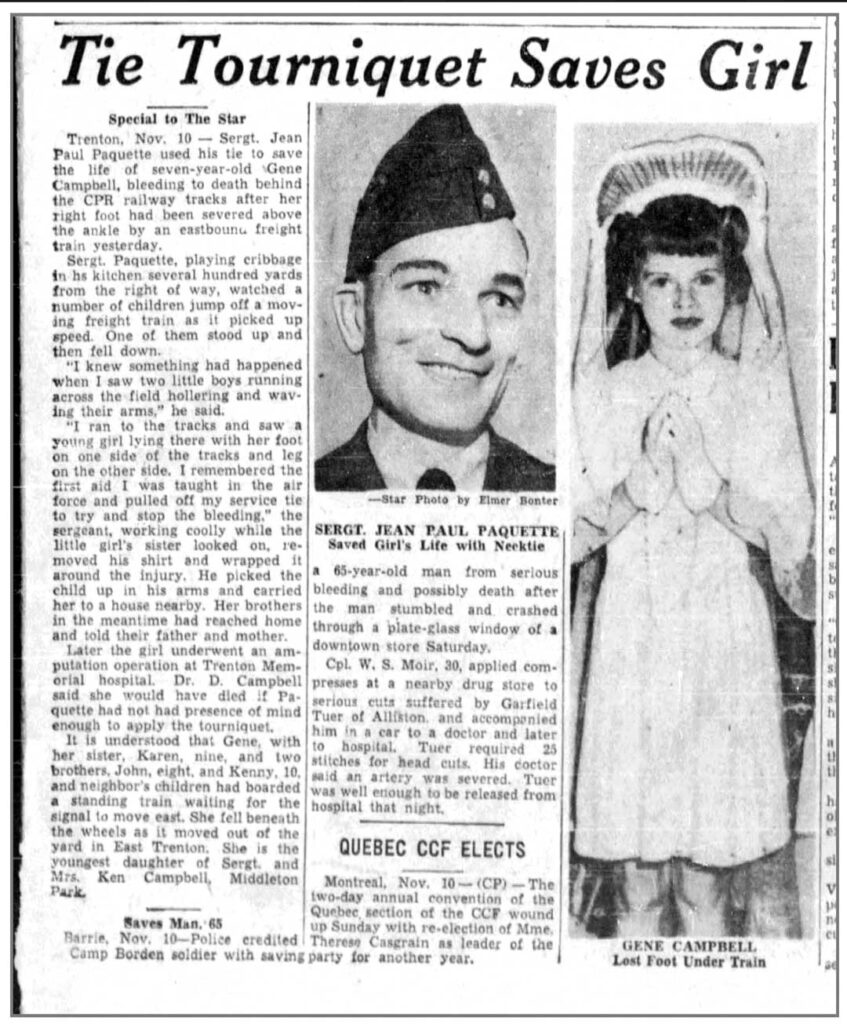
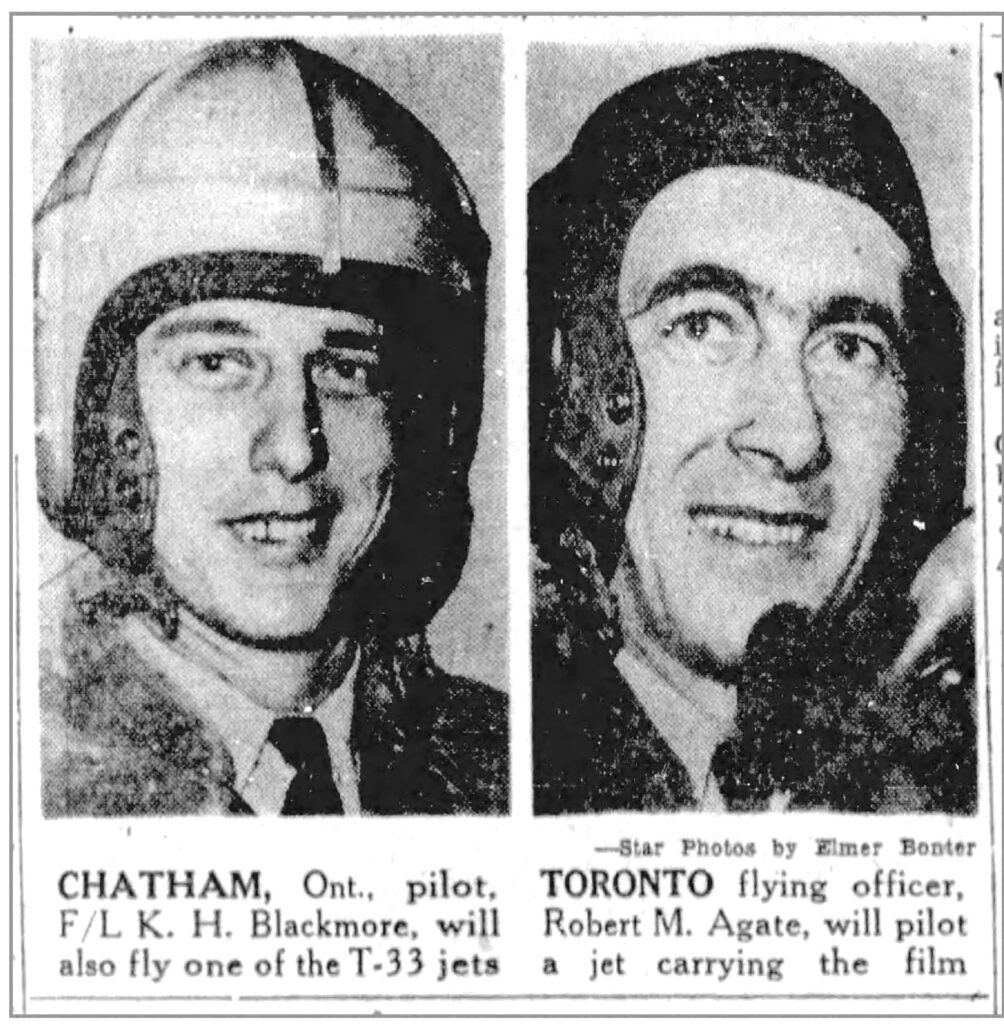
“Mr. Bonter, 75, died Friday, Feb. 22, 1991, in Belleville General Hospital, following a brief illness.” Obituary; Belleville Intelligencer, , 27 Feb 1991, Elmer Bonter: Well-known journalist

“…and speaking of one “Scoop” Bonter ’tis said he is on his way homeward bound for Hog Town to join Dave (Reynolds) under the shade of the old Royal York…” The Viewfinder…Nov. 1944
© Dale Gervais 2025


